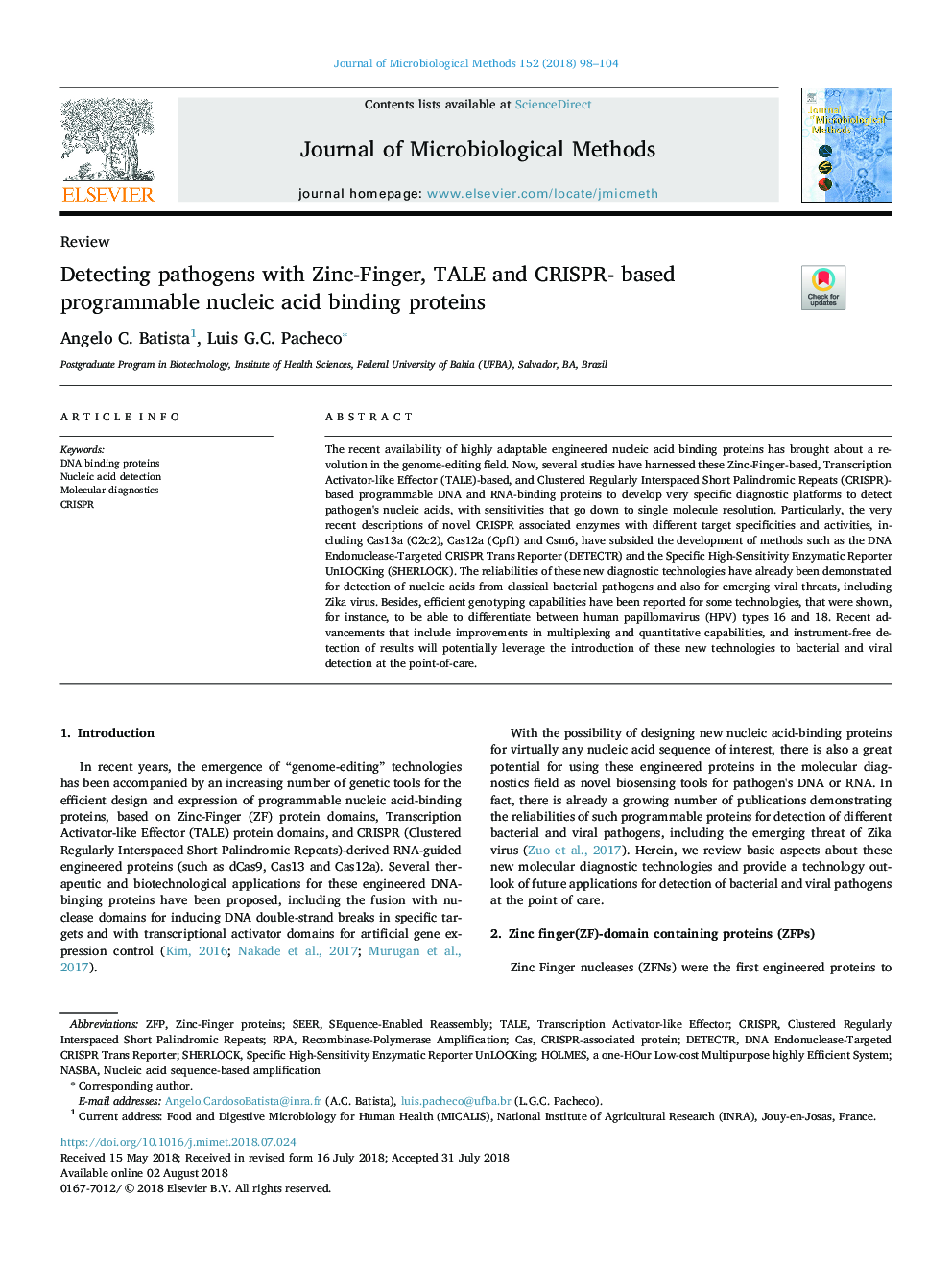| کد مقاله | کد نشریه | سال انتشار | مقاله انگلیسی | نسخه تمام متن |
|---|---|---|---|---|
| 8420268 | 1545891 | 2018 | 7 صفحه PDF | دانلود رایگان |
عنوان انگلیسی مقاله ISI
Detecting pathogens with Zinc-Finger, TALE and CRISPR- based programmable nucleic acid binding proteins
دانلود مقاله + سفارش ترجمه
دانلود مقاله ISI انگلیسی
رایگان برای ایرانیان
کلمات کلیدی
CRISPRCASRPACRISPR-associated proteinZFPtranscription activator-like effectorclustered regularly interspaced short palindromic repeats - به طور منظم تکرار پینگندرومی کوتاه مدت میان دو طرف تقسیم می شودNucleic acid detection - تشخیص اسید نوکلئیکMolecular diagnostics - تشخیص مولکولیTALE - تلهnucleic acid sequence-based amplification - تکثیر مبتنی بر دنباله اسید نوکلئیکNASBA - دامSEER - سرندZinc-finger proteins - پروتئین روی انگشتDNA binding proteins - پروتئین های متصل کننده DNA
موضوعات مرتبط
علوم زیستی و بیوفناوری
بیوشیمی، ژنتیک و زیست شناسی مولکولی
بیوتکنولوژی یا زیستفناوری
پیش نمایش صفحه اول مقاله

چکیده انگلیسی
The recent availability of highly adaptable engineered nucleic acid binding proteins has brought about a revolution in the genome-editing field. Now, several studies have harnessed these Zinc-Finger-based, Transcription Activator-like Effector (TALE)-based, and Clustered Regularly Interspaced Short Palindromic Repeats (CRISPR)-based programmable DNA and RNA-binding proteins to develop very specific diagnostic platforms to detect pathogen's nucleic acids, with sensitivities that go down to single molecule resolution. Particularly, the very recent descriptions of novel CRISPR associated enzymes with different target specificities and activities, including Cas13a (C2c2), Cas12a (Cpf1) and Csm6, have subsided the development of methods such as the DNA Endonuclease-Targeted CRISPR Trans Reporter (DETECTR) and the Specific High-Sensitivity Enzymatic Reporter UnLOCKing (SHERLOCK). The reliabilities of these new diagnostic technologies have already been demonstrated for detection of nucleic acids from classical bacterial pathogens and also for emerging viral threats, including Zika virus. Besides, efficient genotyping capabilities have been reported for some technologies, that were shown, for instance, to be able to differentiate between human papillomavirus (HPV) types 16 and 18. Recent advancements that include improvements in multiplexing and quantitative capabilities, and instrument-free detection of results will potentially leverage the introduction of these new technologies to bacterial and viral detection at the point-of-care.
ناشر
Database: Elsevier - ScienceDirect (ساینس دایرکت)
Journal: Journal of Microbiological Methods - Volume 152, September 2018, Pages 98-104
Journal: Journal of Microbiological Methods - Volume 152, September 2018, Pages 98-104
نویسندگان
Angelo C. Batista, Luis G.C. Pacheco,